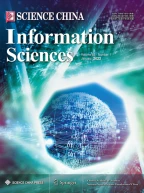Abstract
Single event upset (SEU) is one of the most important origins of soft errors in aerospace applications. As technology scales down persistently, charge sharing is playing a more and more significant effect on SEU of flip-flop. Charge sharing can often bring about multi-node charge collection in storage nodes and non-storage nodes in a flip-flop. In this paper, multi-node charge collection in flip-flop data input and flip-flop clock signal is investigated by 3D TCAD mixed-mode simulations, and the simulate results indicate that single event double transient (SEDT) in flip-flop data input and flip-flop clock signal can also cause a SEU in flip-flop. This novel mechanism is called the SEDT-induced SEU, and it is also verified by heavy-ion experiment in 65 nm twin-well process. The simulation results also indicate that this mechanism is closely related with the well-structure, and the triple-well structure is more effective to increase the SEU threshold of this mechanism than twin-well structure.
Similar content being viewed by others
References
Baumman R. Radiation-induced soft errors in advanced semiconductor technologies. IEEE Trans Device mater Rel, 2005, 5: 305–316
Baumman R C. Landmarks in Terrestrial Single Event Effects. In: IEEE NSREC Short Course Section III, San Francisco, 2013. 1–93
Amusan O A, Wulski A F, Massengill L W, et al. Charge collection and charge sharing in a 130 nm CMOS technology. IEEE Trans Nucl Sci, 2006, 53: 3253–3258
Huang P, Chen S, Liang Z, et al. Mirror image: newfangled cell-level layout technique for single-event transient mitigation. Chin Sci Bull, 2014, 59: 2850–2858
Kuappila A V, Bhuva B L, Massengill L W, et al. Impact of process variations and charge sharing on the single event upset response of flip-flops. IEEE Trans Nucl Sci, 2011, 58: 2658–2663
Zhang K, Kobayashi K. Contributions of charge sharing and bipolar effects to cause or suppress MCUs on redundant latches. In: IEEE International Reliability Physics Symposium (IRPS), Anaheim, 2013. SE.5.1–SE.5.4
Huang P, Chen S, Chen J, et al. Single event pulse broadening after narrowing effect in nano CMOS logic circuit. IEEE Trans Dev Mat Rel, 2014, 14: 849–856
Black J D, Dodd P E, Warren K M. Physics of multiple-node charge collection and impacts on single event characterization and soft error rate prediction. IEEE Trans Nucl Sci, 2013, 60: 1836–1851
Gaspard N J, Jagannathan S, Diggins Z J, et al. Technology scaling comparison of flip-flop heavy-ion single event upset cross sections. IEEE Trans Nucl Sci, 2013, 60: 4368–4373
Loveless T D, Jagannathan S, Reece T, et al. Neutron- and proton-induced single event upset for D and DICE flip-flop design at a 40 nm technology node. IEEE Trans Nucl Sci, 2011, 58: 1008–1014
Hutson J M, Ramachadran V, Bhuva B L, et al. Single event-induced error propagation through nominally-off transmission gates. IEEE Trans Nucl Sci, 2006, 53: 3558–3562
Warren K M, Sternberg A L, Black J D, et al. Heavy ion testing and single event upset prediction considerations for a DICE flip-flop. IEEE Trans Nucl Sci, 2009, 56: 3130–3137
Wissel L, Heidel D F, Gordon M S, et al. SFlip-flop upsets from single-event-transients in 65nm clock circuits. IEEE Trans Nucl Sci, 2009, 56: 3145–3151
Hansen D L, Miller E J, Kleinosowski A, et al. Clock, flip-flop, and combinatorial logic contributions to the SEU cross section in 90 nm ASIC technology. IEEE Trans Nucl Sci, 2009, 56: 3542–3550
Amusan O A, Casey M C, Bhuva B L, et al. Laser verification of charge sharing in a 90 nm bulk CMOS proces. IEEE Trans Nucl Sci, 2009, 56: 3065–3070
Harada R, Mitsuyama Y, Hashimoto M, et al. Neutron induced single event multiple transients with voltage scaling and body biasing. In: IEEE International Reliability Physics Symposium (IRPS), Monterey, 2011. 1541–7026
Huang P C, Chen S M, Chen J J, et al. Novel N-hit single event transient mitigation technique via open guard transistor in 65 nm bulk CMOS process. Sci China Sci, 2013, 56: 271–279
Huang P C, Chen S M, Chen J J, et al. Simulation study of N-hit SET variation in differential cascade voltage switch logical circuits. Sci China Inf Sci, 2015, 58: 022401
He Y B, Chen S M. Simulation study of the selectively implanted Deep-N-Well for PMOS SET mitigation. IEEE Trans Dev Mat Rel, 2014, 14: 99–103
Roy T, Witulski A F, Schrimf R D, et al. Single event mechanisms in 90 nm triple-well CMOS divices. IEEE Trans Nucl Sci, 2008, 55: 2948–2956
Huang P C, Chen S M, Chen J J, et al. Heavy-ion-induced charge sharing measurement with a novel uniform vertical inverter chains (UniVIC) test structure. IEEE Trans Nucl SCI, 2015, 62: 3330–3338
Ahlbin J R, Atkinson N M, Gadlage M J, et al. Influence of N-well contact area on the pulse width of single-event transients. IEEE Trans Nucl Sci, 2011, 58: 2585–2590
Tang D, He C H, Li Y H, et al. Soft error reliability in advanced CMOS technologies-trends and challenges. Sci China Tech Sci, 2014, 57: 1846–1857
Narasimham B, Bhuva B, Massengill L, et al. Scaling trends in SET pulse widths in sub-100 nm bulk CMOS processes. IEEE Trans Nucl Sci, 2010, 57: 3336–3341
Author information
Authors and Affiliations
Corresponding author
Rights and permissions
About this article
Cite this article
Huang, P., Chen, S. & Chen, J. Single event upset induced by single event double transient and its well-structure dependency in 65-nm bulk CMOS technology. Sci. China Inf. Sci. 59, 042411 (2016). https://doi.org/10.1007/s11432-015-5471-y
Received:
Accepted:
Published:
DOI: https://doi.org/10.1007/s11432-015-5471-y
